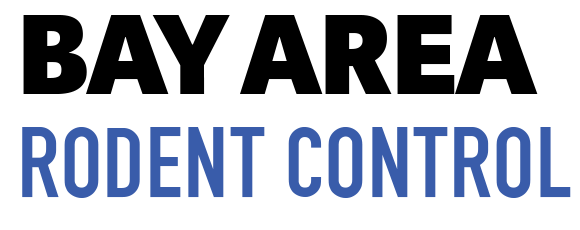Rats are persistent and resourceful pests that can quickly turn into a significant problem if left unchecked. In urban areas like the Bay Area, rats thrive in close proximity to human activity, often sneaking into homes through small openings and exploiting cluttered spaces for food and shelter. Recognizing the early signs of a rat infestation is essential to prevent property damage and health risks.
This guide highlights the key indicators of rat activity and provides actionable steps to address infestations before they escalate.
Why Early Detection is Crucial
Rats are prolific breeders, with a single pair capable of producing dozens of offspring in just a few months. Early detection of their presence allows you to implement control measures before the infestation grows, saving you time, money, and stress.
Key Signs of a Rat Infestation
1. Droppings
Rat droppings are a telltale sign of infestation and can be found in areas where rats are active.
- Appearance:
- Small, dark, and pellet-shaped.
- Blunt ends distinguish them from mouse droppings.
- Common Locations:
- Near food sources, along walls, or inside cabinets.
Tip: Fresh droppings are moist and dark, while older ones are dry and crumbly.
2. Gnaw Marks
Rats chew on various materials to keep their teeth sharp and access food or shelter.
- Commonly Chewed Items:
- Wooden furniture, plastic, and cardboard.
- Electrical wires, which can create fire hazards.
- Identifying Marks:
- Small, rough-edged chew marks on surfaces or objects.
3. Scratching and Scurrying Sounds
Rats are nocturnal, so their movements are often heard at night.
- Where to Listen:
- Walls, ceilings, and floors.
- Behind appliances or inside attics and basements.
- What You’ll Hear:
- Scratching noises as they navigate narrow spaces.
- Scurrying sounds from their rapid movement.
4. Grease Marks and Tracks
Rats leave greasy streaks along walls and floors as their oily fur brushes against surfaces.
- Signs to Look For:
- Dark smudges along baseboards or near entry points.
- Footprints or tail marks in dusty areas.
5. Nests and Burrows
Rats use soft materials like paper, fabric, and insulation to build nests.
- Indoor Nests:
- Found in hidden areas like attics, walls, or behind furniture.
- Outdoor Burrows:
- Located near foundations, gardens, or under decks.
Secondary Indicators of Rat Activity
- Pet Behavior: Pets may bark, sniff, or scratch at areas with rat activity.
- Ammonia-Like Smell: A strong, musty odor often indicates a heavy infestation.
- Disappearing Food: Food packaging or leftovers disturbed without explanation.
What to Do If You Spot These Signs
1. Confirm the Infestation
- Use tracking powders or cameras to monitor rat activity.
- Look for consistent signs like droppings, tracks, and gnaw marks.
2. Address the Infestation
- Seal Entry Points:
- Use steel wool, caulk, or metal mesh to block access.
- Set Traps:
- Place snap traps or bait stations along walls and high-activity areas.
- Eliminate Attractants:
- Store food in airtight containers and clean up crumbs immediately.
3. Hire Professional Help
If the infestation is severe or persists despite your efforts, consider hiring a professional pest control service. Professionals can assess the scope of the problem and implement effective solutions.
Tips for Preventing Future Infestations
- Inspect Your Home Regularly: Check for new gaps or openings rats could exploit.
- Maintain Cleanliness: Keep kitchens and storage areas free of food debris.
- Manage Outdoor Spaces:
- Trim vegetation near your home to eliminate hiding spots.
- Store firewood and debris away from walls.
Acting Quickly Saves Time and Money
Spotting the early signs of a rat infestation is your first line of defense against these invasive pests. By staying vigilant and taking swift action, you can prevent significant damage to your property and reduce health risks to your family. For Bay Area residents, understanding rat behavior and monitoring your home regularly are key to keeping your living spaces rodent-free.
Don’t wait until it’s too late—start protecting your home today.
Relevant Links/Sources:
CDC: Preventing Rat Infestations
UC IPM: Rat Management
National Pest Management Association: Identifying Rat Activity
